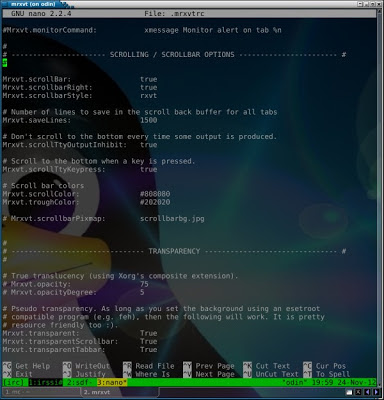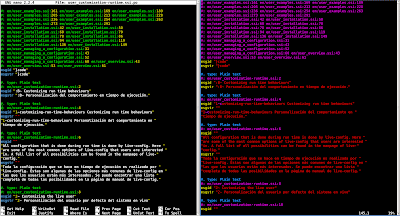I published this script I wrote for personal use several weeks ago in my
gopher hole concretely in the
phlog but I decided to include it here under the scripts tag for an easy reference.
Credits go to Robby for his extraordinary suggestion of:
"This .po file is 'poo'"
I must confess I'm still laughing at it every time I think about it but hopefully I will not get that message very often.
Here is the script:
(As you can see the usage is
: ~$ poic file.po)
#!/bin/sh
# 'poic' stands for Po Integrity Check
msgfmt --verbose --check --output-file=/dev/null $1
if [ "$?" -eq "0" ]
then
echo ""
echo "This .po file is 'good': $(echo $1)"
elif [ "$?" -ne "0" ]
then
echo ""
echo "This .po file is 'poo': $(echo $1)"
fi
A friend of mine, skizzhg, proposed this alternative version and renamed it to 'poo':
#!/bin/sh
if [ "$1" = "" ]; then
printf '%s\n' " Po Integrity Check"
printf '%s\n' " No file specified. Usage: poo <file.po>"
else
msgfmt --verbose --check --output-file=/dev/null "$1" && \
{ printf "\n This .po file is 'good': $1 \n"; } || \
{ printf "\n This .po file is 'poo': $1 \n"; }
fi
I think that skizzhg's version is cleverer than mine and also more complete because it includes information about the script and usage notes.
If you think that 'poo' is not a very nice name be aware that it could perfectly stand for "PO Officer" ;-)
Thank you very much skizzhg. You rock!
Another friend proposed this other version. Let's call it poo2 (His suggestion)
#!/bin/sh
if [ -z "$1" ]; then
echo ' Po Integrity Check'
echo ' No file specified. Usage: poo2 <file.po>'
exit 1
fi
if msgfmt --verbose --check --output-file=/dev/null "$1";then
status=good
else
status=poo
fi
printf "\n This .po file is '%s': %s \n" "$status" "$1"
Thanks :-)






































